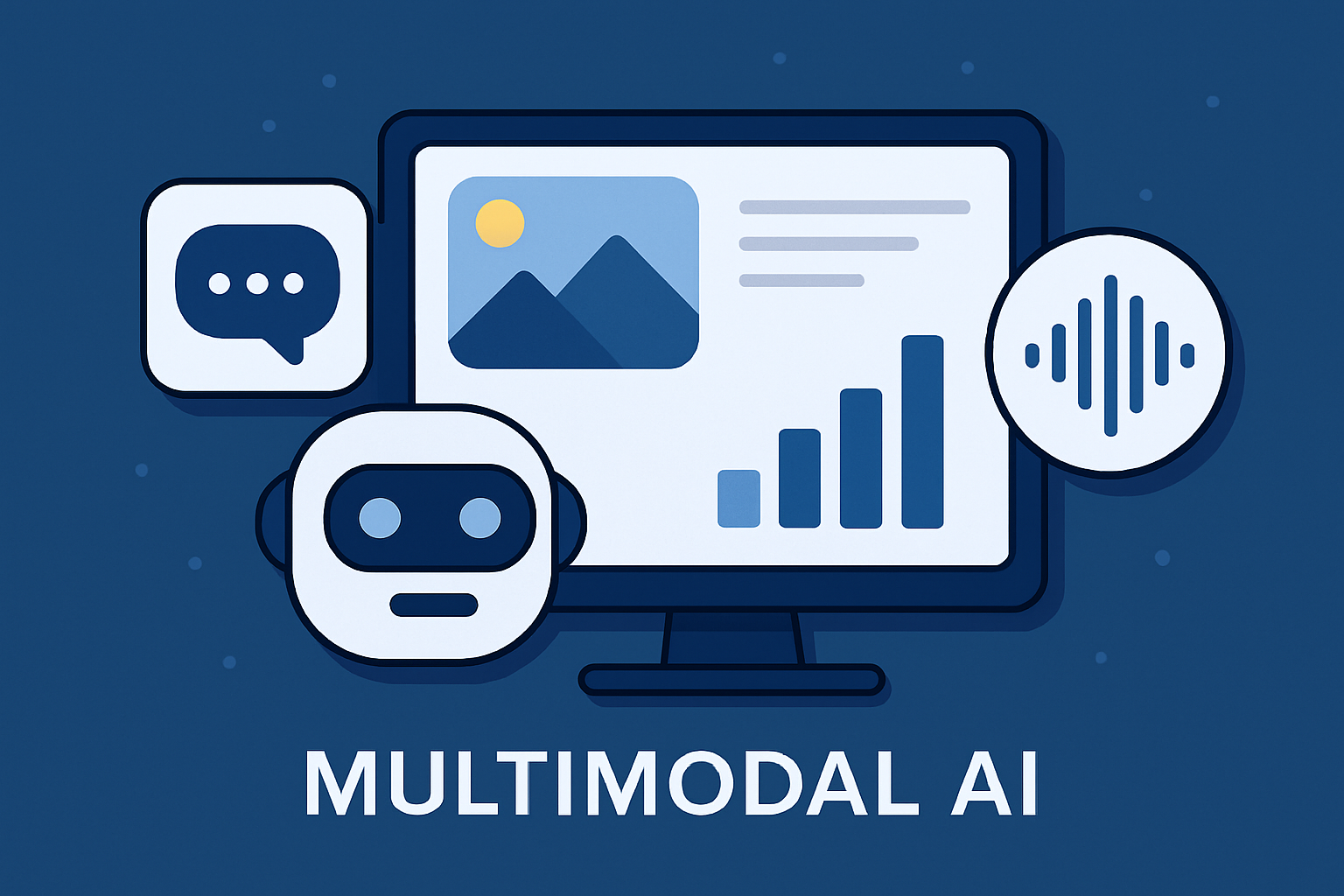In today’s world where data is everywhere from pictures, emails, voice notes, texts, charts, even emojis. But here’s the secret, most of our everyday tools and AI systems only understand one type of data at a time. What if a system could understand everything at once? That being said what if it could understand your voice, your photo, your text message, and your spreadsheet? And connect the dots between them? That’s exactly where Multimodal data walks in.
What is multimodal data?
Multimodal data simply means information that is coming from different formats or sources like text data that can include emails, documents, or even social media posts in texts. Images like photos, diagrams, medical scans, radar scans or even charts. Audio like voice commands, podcasts, phone recordings etc. Additionally, videos like YouTube clips, security footage, video calls. Also, it can include Sensor data that can have temperature, motion, GPS, or wearables.
When AI systems can process and connect these different types of data together, that’s where multimodal AI comes in action. So instead of just reading a sentence, or just analyzing a picture, it reads everything together and makes much smarter conclusions.
Why Does Multimodal Data Matter?
Multimodal data is a real game-changer for many fields let’s say for Business insights where if you run an online store then your sales chart can show a drop in revenue, your customers emails mention “delayed delivery”, or your warehouse camera shows bad weather affecting trucks. Instead of checking all of this manually, a multimodal AI system could connect these dots and tell you, “Sales dropped due to storm-related shipping delays”.
In healthcare, multimodal data systems are being generally trained to read X-rays, listening to symptoms described in natural language, and even pull history from digital health records. All at once, leading to faster and more personalized care.
In customer support, Imagine an AI that reads, what the customer wrote, the tone in their voice, or the past purchase behavior. And gives you the right support agent all the context they need and all of this in one go.
Also, in Education & learning domain, multimodal AI can analyze a student’s written answers, their facial expressions during a video lesson, or even their clicks and pauses during online tests. This helps platforms the learning process, giving help where it is needed the most.
A Simple Example: Using Multimodal AI in Everyday Life
Let’s say you’re planning a weekend trip with your family:
You speak into your phone: “Where should we go this weekend with kids?”
You can upload a photo of your last trip.
- The AI checks the weather forecast.
- It reads a travel blog you liked last month.
- And then it shows you a destination, video, and packing list and that too very instantly.
That’s not the future. That’s what multimodal AI is already beginning to do in our daily life. In simple words, Multimodal data is how artificial intelligence learns to understand the world like humans do, just by listening, reading, watching, and feeling patterns all together.
What challenges still exist in using multimodal AI?
One of the biggest challenges in multimodal AI is that the data it works with often comes in different formats where it had to deal with text, images, audio, and more but combining them in a way that makes sense is still tough. Each format behaves differently and aligning them properly is a big challenge.
Multimodal AI still struggles with meaning and emotion. For example, it might misread sarcasm in text or misinterpret a smile in a photo and this limits its accuracy in real-life situations.
Processing multiple data types at once requires powerful hardware and large-scale infrastructure, which makes it expensive and harder to scale for small teams. In addition to this, the multimodal systems often handle sensitive inputs like faces, voices, and documents, ensuring user privacy and data protection may become critical and challenging.
How you can start using simple tools with multimodal capability today?
You’re probably already using multimodal AI without realizing it. Tools like Google lens that reads text from images, voice assistants like Siri or Alexa, or apps that generate images from your text like ChatGPT with image generation, all use multiple types of data including text, voice, images and others altogether.
If you want to try more advanced but easy to use tools then you may try Notion AI that mix visuals and text to help with content creation, voice to text tools like Otter.ai which transcribe and analyze meetings using audio and text, or you may go for smart search tools like perplexity that understands your text, images, and even voice. And the best part? you don’t need even any coding. You can just start with what you already use and look for tools that work across, text, visuals, and sound.


1 thought on “What Is Multimodal Data & Why It’s the Future of Smart Technology”